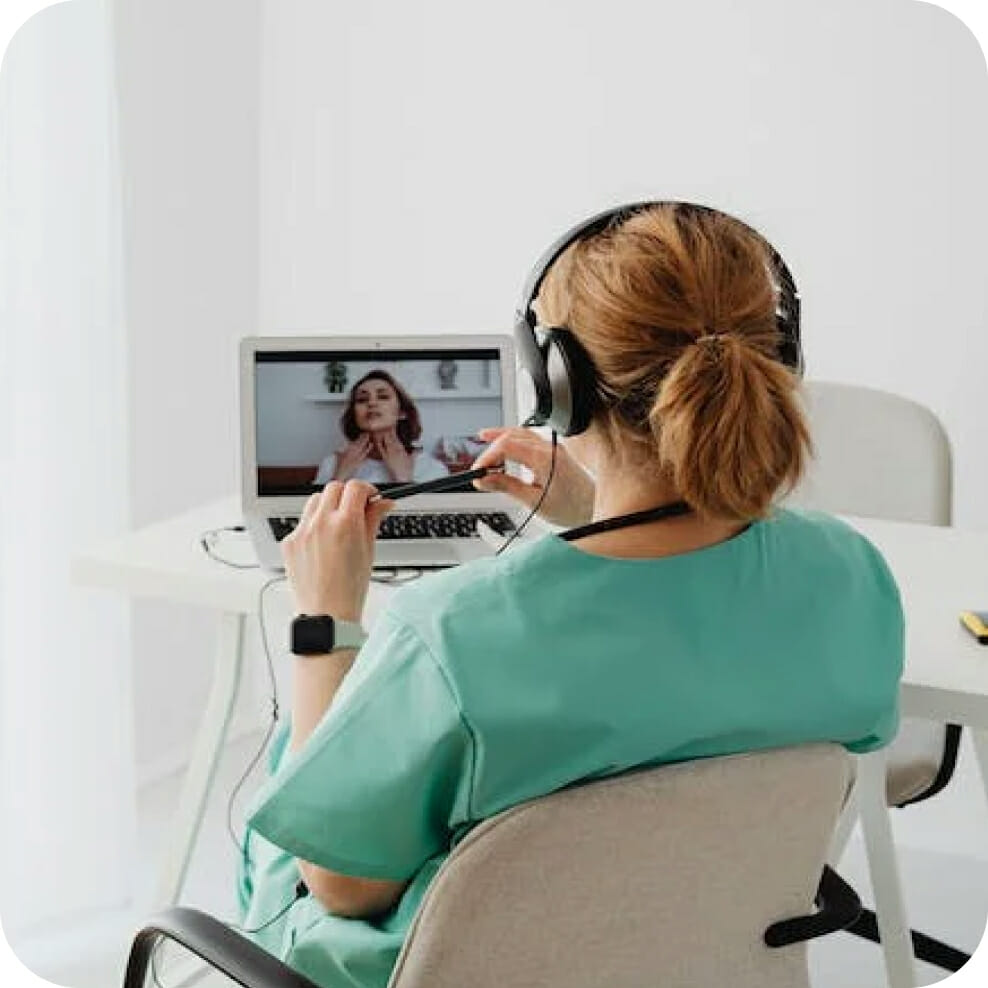Telehealth & Telemedicine
Behavioral Healthcare
Path's commitment to our patients is that we will do all that we can to ensure that you can get the help you are seeking, regardless of your age, availability, or location. To facilitate our Zero Barrier to Care commitment we offer Telehealth and Telemedicine appointment options for our patients through the use of secure, interactive audio and video technologies.

Frequently Asked
Questions.
How can I make a Telehealth appointment?
To make scheduling a telehealth appointment simple, we offer various options: call your local Path office or use our contact forms on the individual clinic pages.
What is Telehealth and Telemedicine?
Telehealth and Telemedicine is a way to virtually connect patients to providers to allow access to health services via interactive audio and video technologies such as live video sessions, mobile apps or other approved telecommunication mediums. From the privacy of your own home you can be connected with a qualified and licensed provider.
Benefits of Telehealth and Telemedicine?
- Improving access to care and reducing health disparities
- Improve quality of life for patients with chronic illness or disability through the use of technology that enables better communication between the patient and their providers, including increased access to emergency services and reduced falls in homebound or hospitalized patients.
- Strategically deployed telemedicine can help support a range of important health-care related functions including: helping to alleviate workload pressures at rural hospitals; increasing the capacity of public health departments to investigate disease outbreaks; expanding surveillance capabilities for emerging diseases like pandemic influenza or SARS; providing support during natural disasters such as hurricanes, tornadoes, earthquakes and floods – where wired communications may be disrupted - by enabling real-time consultation between public health professionals who working in their community and medical specialists in distant locations.
- Providing access to full spectrum of care
- Telemedicine can also help reduce health disparities that are often observed between urban and rural areas, or among populations with low income levels. Telehealth support for the underserved is provided by many non-profit, government and commercial entities
How long will I need to receive services for?
This is a complex question with a wide range of answers. The answers can change based on factors such as: specific diagnosis, acuity and duration of symptoms, personal motivation and willingness to engage in services, personal support systems, the presence of both mental health and substance abuse issues (dual diagnosis), your personal goals for your care, etc.
It is also important to decide if you will be engaging in care from an illness removal perspective or a wellness promotion perspective. If, like going to a medical doctor, you are simply wanting to have negative symptoms eliminated or reduced, you will base your time with us according to the presence of those unpleasant symptoms. Once the symptoms are gone or reduced to manageable levels, you’re done. This can be a few weeks up to a year.
However, if you adopt a wellness promotion perspective, you will be focused on enhancing the positive aspects of your life, to make a good life even better, and to prevent future issues. Your goals will evolve over time but your focus is on building from one accomplishment to the next.
This approach may take more time as it is like exercising, but for your mental well-being instead of your physical. You may even begin care in an illness mindset and evolve over time to a focus on promoting wellness.
What is important is to note that regardless of your approach, you will always be in control of your own care. PATH will work collaboratively with you to develop personally meaningful treatment goals that focus on your individual needs.
You will also review your progress regularly to determine whether ongoing care is still the right choice for you.
